Buildings on the Castle Hill in the reign of Duke Barnim III (mid-14th century)
The oldest remains of the ducal buildings on the hill, confirmed by archaeological research, date back to the mid-14th century. At that time, in the northern part of the hill, a stone house (“The Stone House”) and a small castle church with a wall surrounding the churchyard were built for the ruler, Barnim III. Soon after, the duke dedicated the church to the christianiser of Pomerania, St. Otto, and extended the temple to form a three-nave basilica with an ambulatory around the east end, a tower at the west end and a burial crypt by the ambulatory. We know the temple was richly furnished. With the expansion of the church, a new, more magnificent ducal seat, called “The Big House”, was erected on the south side of the Castle Hill, which was completed by Duke Barnim XI in the mid-16th century. As a result, the castle layout assumed a defensive, representative and sacral character.
The person and merits of Barnim III, called the Great, whose actions were aimed at raising the status of the ducal seat, are commemorated on a magnificent stone plaque put up on the wall of the northern wing of the castle (on the side facing the Great Courtyard). The remains of the oldest castle buildings are on display in the rooms of the western wing, in excavations covered with glass panes: the “Stone House” in the room situated by the Ducal Vault, the church in Duke Bogislaw X’s Hall, and the Castle Hill fortifications in Duke Bogislaw X’s Hall and the Bell Tower.





